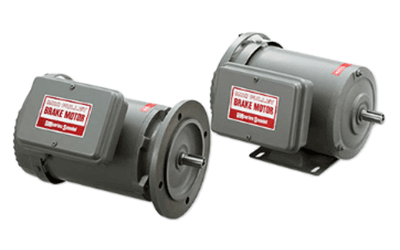What Is a Brake Motor?

A brake motor is a motor equipped with an integrated brake system.
Unlike standard motors that coast to a stop, brake motors can be actively braked, offering space-saving advantages in tight spaces and allowing for quick braking force generation and release. This results in smoother motion control and responsive operation of mechanical devices.
Uses of Brake Motors
Brake motors are employed in various applications:
1. Elevators
In elevators, brake motors control cabin movement, ensuring reliable stopping, essential for passenger safety.
2. Industrial Machinery
Used in industrial machinery, brake motors provide precise motion control, crucial for robotics, manufacturing lines, and conveyor systems, where precise object positioning is necessary.
3. Railway Vehicles
Brake motors in trains regulate driving force and speed, often integrating with advanced systems like regenerative braking for enhanced performance.
Principle of Brake Motors
Brake motors typically incorporate electromagnetic brakes, which release or engage the brake based on voltage application to the excitation coil. Induction motors, consisting of a stator and rotor, are commonly used, leveraging electromagnetic induction for operation.
How to Select a Brake Motor
When selecting a brake motor, consider the mounting method, power supply voltage, output capacity, and brake structure:
1. Mounting Method
Choose between leg or flange mounting based on the motor’s application and load device.
2. Power Supply Voltage
Select a suitable voltage for the motor and brake, taking into account the motor’s output capacity, which is determined by speed, and torque, and is expressed in watts (W).
3. Brake Structure
Brake structures vary, including energized and de-energized types, each with distinct operational characteristics.